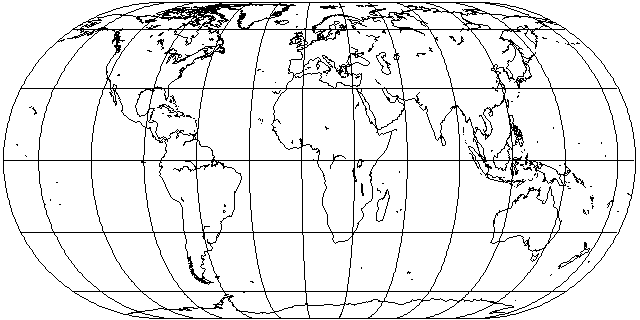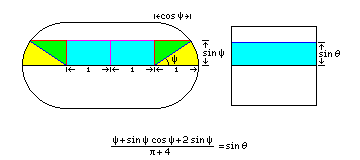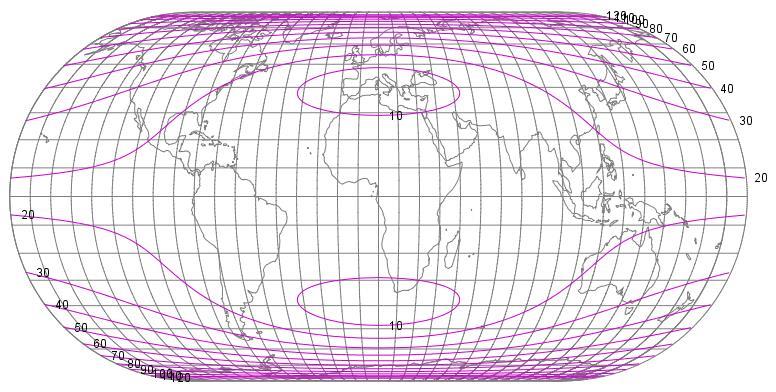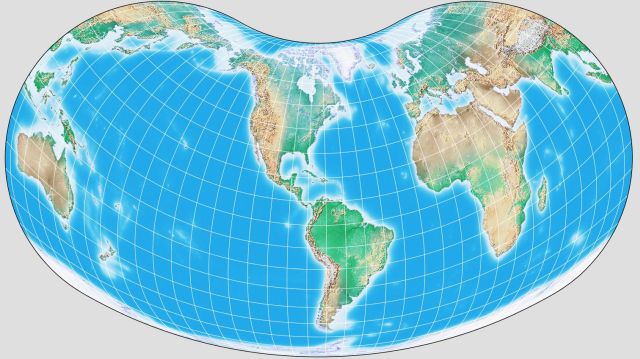
The Eckert IV projection is another attempt to moderate the behavior of the equal-area sinusoidal projection.

Again, this is an equal-area projection. Since the shape of this projection occupies more space than an ellipse, as well as a sinusoid, the stretching of continents at the Equator is considerably more noticeable than on the Mollweide.
However, it is a good compromise between projections like the Mollweide on the one hand, and the Equal-Area Cylindrical projection on the other. Although it can be interrupted, being a pseudocylindrical projection, shear is kept low enough with this projection that interruption is usually not required.
As this diagram illustrates,

although the equation is different, the mathematical basis for locating the parallels on this projection is very similar to that used for the Mollweide projection.
On this projection, vertical stretching close to the equator and horizontal stretching close to the poles balance out with the points without shape distortion being on the central meridian at 40° 30'. Although it was popular during the 1960s, it was originally described in 1906!
Here is a chart from Flex Projector of the distribution of angular distortion in this projection:

A pseudoconic projection not often seen is the Hill Eucyclic projection:

which bent the Eckert IV projection into part of a circle to further reduce errors.